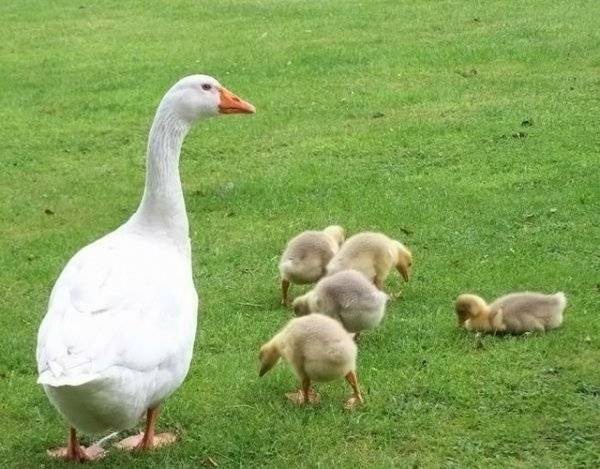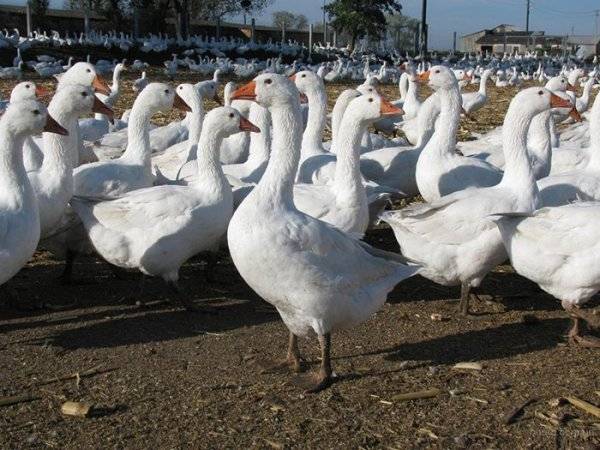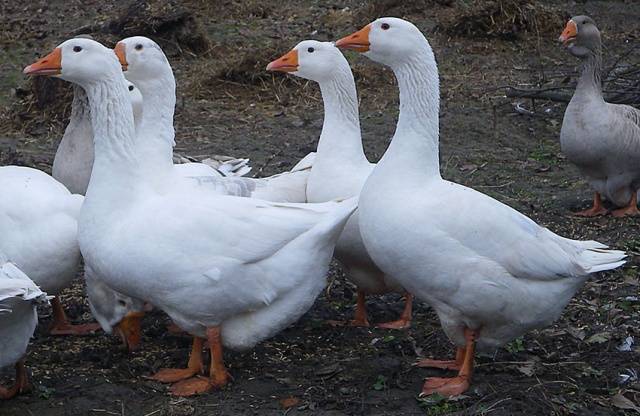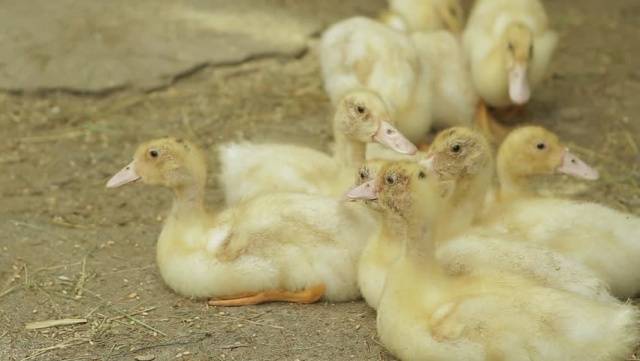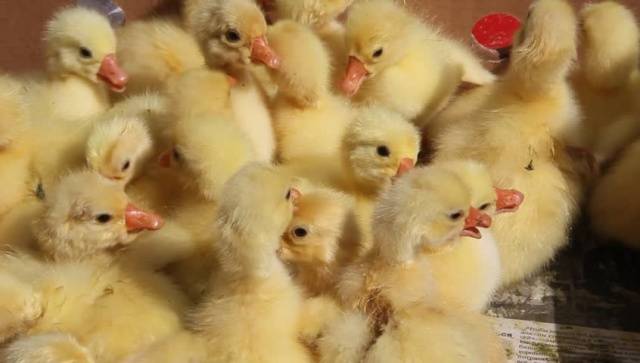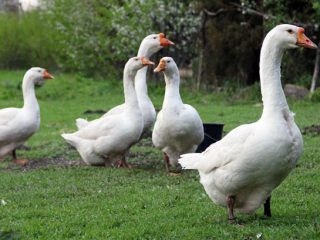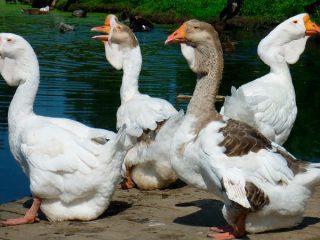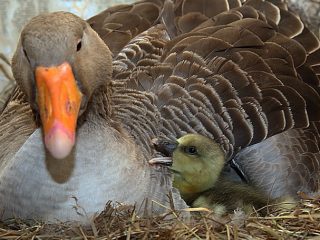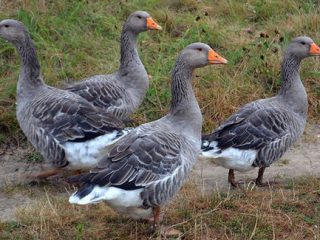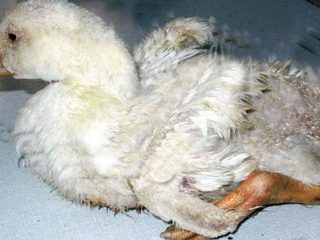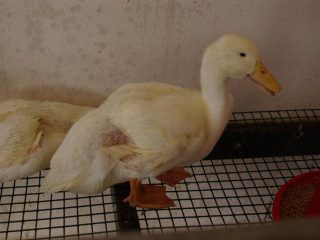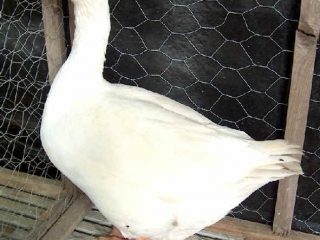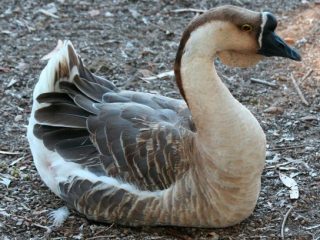Content
In regions where the grass in the meadow does not fade throughout the summer, breeding geese is becoming one of the most profitable types of business. Of all the domesticated bird species, the goose is the most profitable for breeding in a temperate climate zone.
One of the best breeds in the goose world is the Danish Legard. Legard geese appeared in the CIS quite recently and the main livestock is concentrated in Ukraine. This is natural. The climatic conditions in Ukraine are such that it has been profitable to breed geese there since the Middle Ages.
Description goose breeds legard with photo
The breed is originally from Denmark, so this bird is usually called "Danish Legard". Geese of this breed are among the largest. The weight of an adult gander can reach 8 kg. The geese are only one kilogram behind.
Geese Legard breed looks very similar to the Italian and Emden breeds. Although, with careful attention, differences can be found. And the differences are not only external, but also “internal”. Legards are famous for their calm character and insignificant "talkativeness". While the Emden geese have a quarrelsome and spiteful disposition. Plus the Emden geese love to make noise.
What Danish Legard geese look like:
- small light elongated head;
- Blue eyes;
- powerful orange beak of medium length. The tip of the beak is whitish;
- the neck is relatively short and thick;
- the skeleton is graceful;
- the back is straight, straight, wide;
- a fat fold is required on the abdomen;
- metatarsus relatively long, orange;
- the plumage is always only white.
Ducklings have yellow down with dark spots. Little goslings do not stand out from the mass of chicks of other breeds, but, growing up, they change their yellow down to snow-white feathers, becoming like whooper swans.
Sexual dimorphism is well expressed in the breed. The gander has a large square body and a relief neck. The goose has a lighter and more elongated body.
Productive characteristics of legard geese
Legards, like other breeds of geese, are bred for meat. And here the legends can give odds to their rivals. Already at 2-2.5 months, the legards goslings are gaining weight of 6 kg. By 3 months, they can already weigh 7 kg. At the same time, due to a better metabolism, legard geese require 20% less grain feed than other breeds. Legards make a fortune on the grass. Therefore, combining daytime grazing with evening feeding with compound feed, you can achieve rapid weight gain and an optimal ratio between meat and fat.
You can be convinced of this by watching the video from the poultry trade exhibition. The owner himself does not think that his pet weighs the promised 8 kg.
Egg production in geese is very good for this type of bird. Usually a goose lays about 40 eggs weighing 200 g. High egg production is "compensated" by low fertility (60-65%). As a result, 17-20 goslings are obtained from one goose.
Moreover, the heavier the bird, the worse fertilization. Poor fertility is compensated by the high survival rate of goslings. As a result, the Danish legends beat other breeds of geese "on points". From a goose, you can get about 90 kg of goose meat over the summer.
Danish legard geese also have a third productive characteristic: downy.They begin to pinch young animals from 11 months. The fluff is periodically pinched every 6 weeks. In total, 0.5 kg of down can be obtained from one bird per year.
Pros and cons of the breed
Productivity benefits are easy to trace:
- fast weight gain;
- good survival of goslings;
- high quality down;
- economy in feeding.
Other advantages related to the temperament and character of the birds are less noticeable:
- sanguine temperament;
- non-aggressive attitude towards the owner and strangers;
- the rapid emergence of affection for the owner;
- silence;
- unpretentious content.
How easily legard geese get attached to the owner can be seen in the video, where, judging by the squeak, not even an adult bird, but still very small goslings.
Cons of the breed:
- low fertilization of eggs;
- lack of incubation instinct.
The pros of the breed far outweigh its cons.
Breeding
Puberty in geese occurs at about 9 months. Ganders "ripen" 3 weeks later. If all birds are of the same age, then the first month's egg-laying should be removed to force the goose to lay again. In the presence of an "old" gander, the eggs of the young goose will be fertilized immediately. The geese do not have an instinct to incubate, so the eggs will have to be collected and placed in an incubator. Goose oviposition begins in April, even if it is a bird of late hatching.
Eggs from these geese are one of the largest, but the goslings hatch are small in size. However, they grow rapidly and gain weight. Another feature of the legards is the appearance of goslings from young geese that do not quite correspond to the breed standard. But this is normal for a young bird.
Content
The living conditions for these geese practically do not differ from the needs of other breeds. There are only a couple of important conditions:
- calculation of the floor area of 1 m² for each head;
- in winter, it is necessary to keep it indoors.
A semi-closed aviary can be used as a room, which will protect birds from wind and precipitation.
Owner reviews
Conclusion
The Danish Legard breed of geese is still little known not only in Russia, but also in Ukraine. Due to their productive characteristics and their resistance to disease, these geese will soon gain recognition among private owners. For industrial cultivation, they may not be suitable due to the low fertilization of eggs, provided that artificial insemination is not used.
